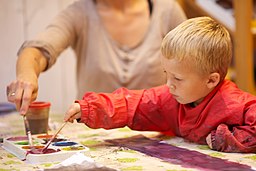Accessibility in online learning and resources
Presented nationally and internationally on inclusion - accessibility and IT issues. I presented in the Queen Elizabeth Hall in London in TechShare. My poster presented at ITiCSE in Dundee won outstanding poster prize.I presented a paper in Anchorage on work (Create interactive accessible e-learning) that I completed for CIPEL.
Asked to edit the Teaching Disabled Students guidelines.
The Naked Lecturer my blog won a University award.
I created Coventry University's guidelines on Inclusive e-Learning.
e-TALIA
Asked by Rosario Kane-Iturrioz to join the e-TALIA project which enabled me to work with European partners in their countries and to present results at conferences. The 2012 Universal Learning Design conference in Austria where I also chaired a session, had a gala dinner and I sat next to Evelyn Glennie.studies have highlighted the need for enhancing language skills and intercultural awareness training of small and medium enterprises (SMEs) ...
The e-TALIA project seeks a greater understanding through transnational cooperation of the specific language and cultural awareness needs as well as of the learning culture of SMEs in the Hospitality and Leisure sectors.
Canada
I was a Visiting Fellow at the University of Windsor, Ontario, Canada for three months. Having kept contact with colleagues there and hosted a reciprocal visit from Alan Wright, Vice-Provost, there are also links being forged between some UWin students and Coventry University students of Forensic and Investigative Studies.CUOnline
Student guides for the University's virtual learning environment - there's an archive for 2000 - 2008 of the guides that I wrote In subsequent years, guides went to single pages. I also wrote tutor guides.I wrote and updated a Mahara e-portfolio guide for tutors and students.







